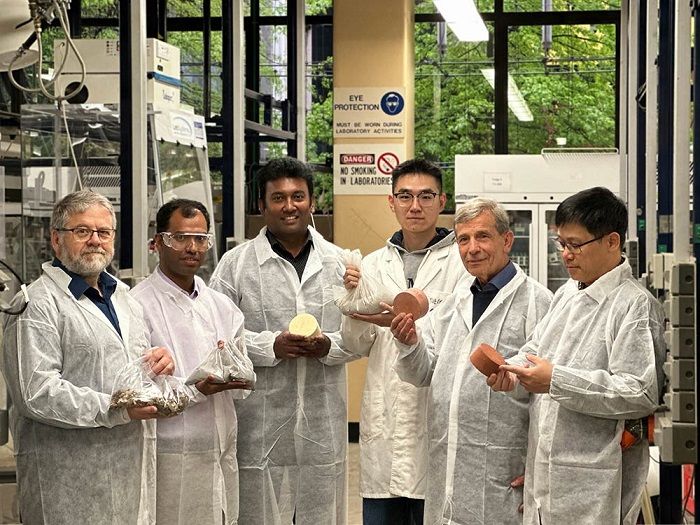Engineers at RMIT University have innovated a new range of bricks made using a mix of waste glass, combusted solid waste (ash) and clay that can save energy in built homes while keeping industrial waste out of landfill.
Working in collaboration with Australia’s largest recycling company, Visy, the engineers from RMIT’s School of Engineering have created bricks with a minimum of 15% waste glass and 20% ash as substitutes for clay. Test results indicate that using these bricks in the construction of a single-storey building could reduce household energy bills by up to 5% compared to standard clay bricks due to improved insulation.
These bricks also deliver potential cost savings to manufacturers, with the replacement of clay with waste materials helping reduce the firing temperature during production by up to 20% compared with standard brick mixtures.

The RMIT research team behind the energy-smart bricks in a lab at RMIT University. Credit: Seamus Daniel, RMIT University
Observing that about 1.4 trillion bricks were used in construction projects globally every year, associate professor and team leader Dilan Robert said, “Business-as-usual brick production produces harmful emissions – including carbon dioxide, sulphur dioxide and chlorine – and puts a serious strain on our natural resources, particularly clay.”
The team’s latest research is published in the international journal Construction and Building Materials.
The study reveals that the new bricks have enhanced energy efficiency through improved thermal performance, and meet stringent structural, durability and environmental sustainability standards. The technology has met the key compliance requirement of fired clay bricks set by Standards Australia (AS 3700).
Lightweight bricks can be produced in a range of colours from white to dark red by changing the formulations, he added.
The team now plans to commercialise the bricks by scaling up the production process in collaboration with brick manufacturers in Melbourne.
Main image: The energy-smart bricks in a range of colours. Credit: Seamus Daniel, RMIT University

